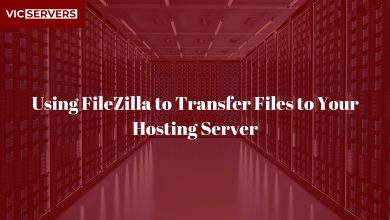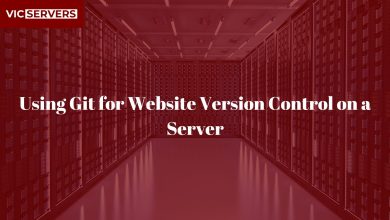Migrating a Website to a New Host – A Complete Guide

Migrating a Website to a New Host – A Complete Guide
Changing web hosts can feel overwhelming — but with the right steps, you can migrate your website smoothly with zero downtime and no data loss. Whether you’re looking for better performance, improved support, or more scalable solutions, migrating to a new hosting provider like Vicservers can be one of the best decisions you make for your website.
Why Migrate to a New Host?
Before we get into the how, let’s look at why people migrate:
- Slow website performance and frequent downtimes
- Poor customer support from the existing host
- Better features or pricing at a new host
- Security concerns or limited scalability
If any of these sound familiar, it’s time to consider moving.
Step-by-Step Website Migration Guide
Step 1: Choose the Right Hosting Provider
Do your research and choose a reliable host that fits your needs. At Vicservers, we offer:
- 99.9% uptime
- 24/7 expert support
- Easy migration tools
- Scalable hosting plans
Step 2: Back Up Your Website
Before doing anything else, back up all your website files and databases. This ensures you have a safety net in case anything goes wrong.
- Use tools like cPanel Backup, UpdraftPlus (for WordPress), or manual FTP/SFTP and phpMyAdmin backups.
- Store the backup on your local computer or cloud storage.
Step 3: Transfer Website Files to the New Host
Upload your files to the new hosting provider:
- Connect to your new server using FTP/SFTP or cPanel File Manager
- Upload all your website files to the public_html directory or the relevant folder
For WordPress sites, make sure you copy the wp-content, wp-includes, and wp-admin folders, plus the core files.
Step 4: Migrate Your Database
If your website uses a database (like MySQL), follow these steps:
- Export your database from the old host using phpMyAdmin
- Create a new database in your new host’s control panel
- Import the database into the new server via phpMyAdmin
- Update your website’s configuration file (e.g.,
wp-config.phpfor WordPress) with the new database credentials
Step 5: Update DNS Records
Now that your site is on the new host, it’s time to point your domain to the new server:
- Log into your domain registrar
- Update the nameservers to those provided by your new hosting provider
- DNS changes can take up to 24–48 hours to fully propagate
Tip: During propagation, avoid making updates to the site on either host.
Step 6: Test Everything Thoroughly
Before announcing your migration is complete, test your site for:
- Broken links and missing images
- Functionality of forms, plugins, and eCommerce carts
- Mobile responsiveness and page load speed
Use a temporary URL or modify your hosts file to preview the site on the new server without DNS changes.
Step 7: Cancel Your Old Hosting (After Backup)
Once you’ve confirmed everything is working and your DNS has fully propagated, you can cancel your old hosting plan. Make sure to:
- Take a final backup
- Save any emails, logs, or files you may still need
Bonus: Let Vicservers Handle It for You
Feeling overwhelmed? Don’t worry — Vicservers offers free website migration for new customers. Our experts will handle the transfer process securely and quickly, so you can focus on running your business.
Final Thoughts
Website migration doesn’t have to be stressful. By following this guide (or letting Vicservers do the work for you), you can move your site with confidence, zero downtime, and no data loss.
Ready to migrate?
Contact our support team today for a free consultation or sign up and enjoy seamless migration with Vicservers, your trusted hosting partner.



